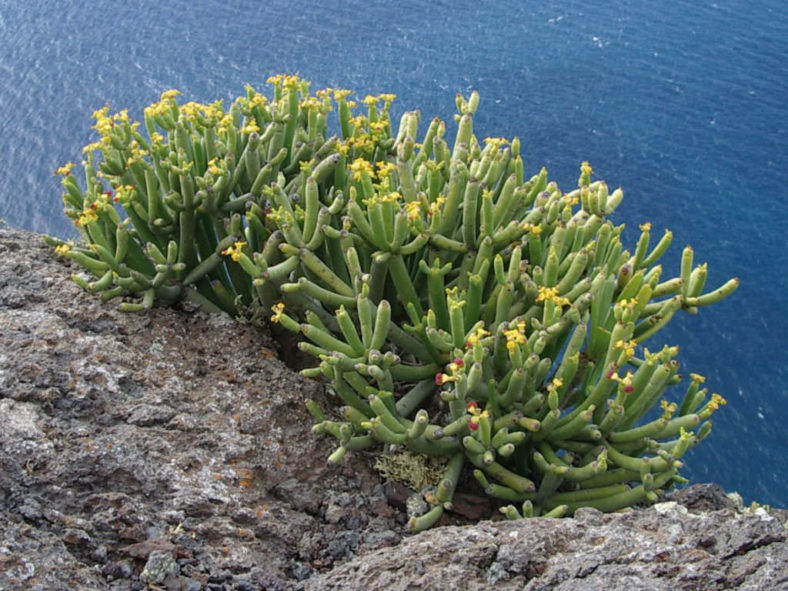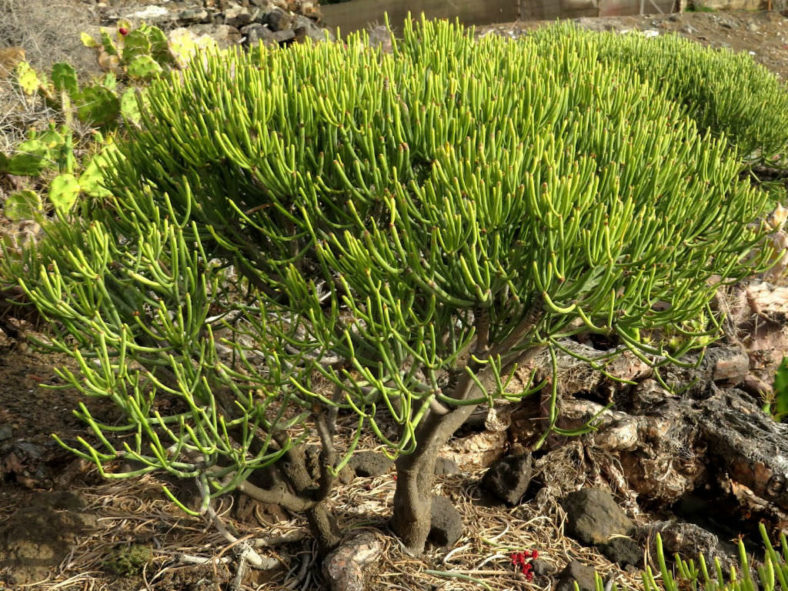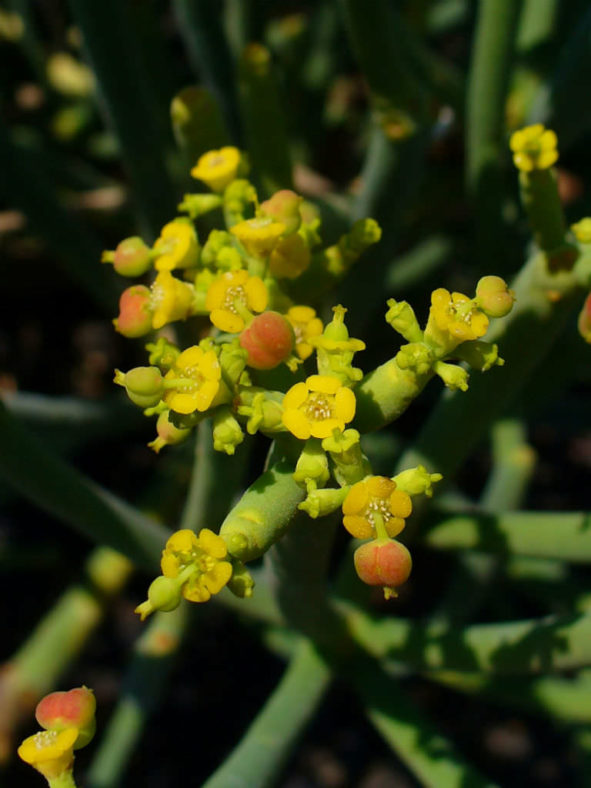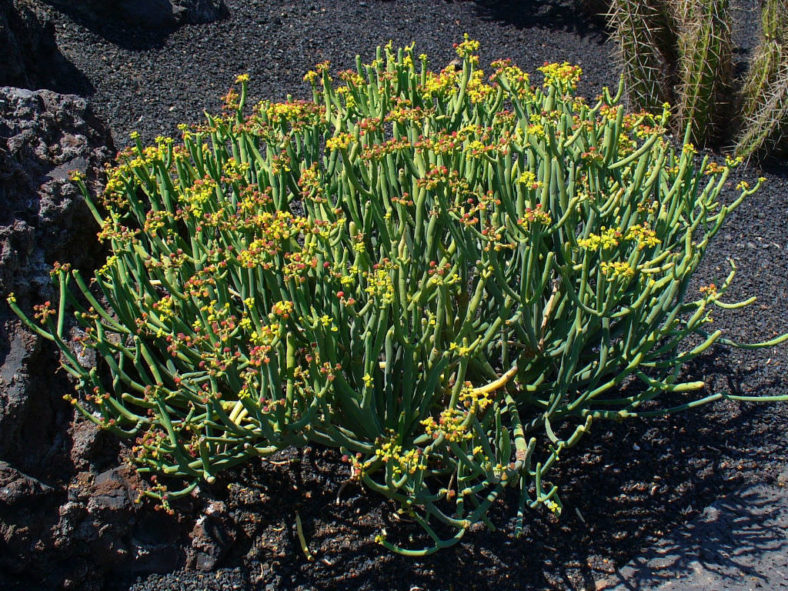Scientific Name
Euphorbia aphylla Brouss. ex Willd.
Common Name(s)
Candelabra Cactus, Leafless Spurge, Milk Hedge
Synonym(s)
Tirucalia aphylla, Tithymalus aphyllus
Scientific Classification
Family: Euphorbiaceae
Subfamily: Euphorbioideae
Tribe: Euphorbieae
Subtribe: Euphorbiinae
Genus: Euphorbia
Etymology
The specific epithet "aphylla (a-FIL-uh)" means "leafless, aphyllous" and refers to the leafless stems of this species.
Origin
Euphorbia aphylla is native to the Canary Islands (Gran Canaria, La Gomera, and Tenerife).
Description
Euphorbia aphylla is a densely branched succulent shrub with slender, leafless branches that arise from a short trunk. The thick, fleshy branches are light grayish-green, blue-green, or yellowish-green. They are cylindrical and can grow up to 10 inches (25 cm) long and about 0.2 inches (0.5 cm) in diameter. The trunk and older branches are woody with brown bark. The leaves are tiny, scale-like, ephemeral, and only present on young growth.
The flowers are yellow and produced in small clusters at the end of the branches, almost year-round, but mainly in spring and fall. The fruits are very small, light brown, or reddish with tiny brown seeds.

How to Grow and Care for Euphorbia aphylla
Light: Most Euphorbias are sun lovers, but some will tolerate partial shade. Place your indoor Euphorbias on windows with southern or southeastern exposure.
Soil: Euphorbias require well-drained soil. They even thrive in poor, dry soils. Use a commercial mixture formulated for cacti and succulents, or make your own potting mix.
Hardiness: Euphorbia aphylla can withstand temperatures as low as 25 to 50 °F (-3.9 to 10 °C), USDA hardiness zones 9b to 11b.
Watering: Succulent Euphorbias can survive drought, but that does not mean they need it. From spring to fall, water when the top inch of soil feels dry. Reduce watering in winter. Give them just enough water to prevent wilting.
Fertilizing: Every Euphorbia will benefit from fertilizer. Apply a balanced fertilizer in a 10-10-10 NPK formulation, diluted to 1/4 strength weekly during the growing season.
Repotting: Euphorbias do not need to be repotted every year. However, when your Euphorbia is outgrowing its pot, it is time to repot the plant in a larger pot and give it a fresh potting mix.
Propagation: The easiest and fastest method of propagation for many species is by using cuttings. Euphorbias can also be grown from seeds, but they can be difficult to germinate and even hard to find.
Learn more at How to Grow and Care for Euphorbia.
Toxicity of Euphorbia aphylla
All Euphorbias produce a toxic white milky sap that can irritate the skin and eyes. Therefore, keeping the plants away from children and pets is best.
Links
- Back to genus Euphorbia
- Succupedia: Browse succulents by Scientific Name, Common Name, Genus, Family, USDA Hardiness Zone, Origin, or cacti by Genus
Photo Gallery
Click on a photo to see a larger version.


